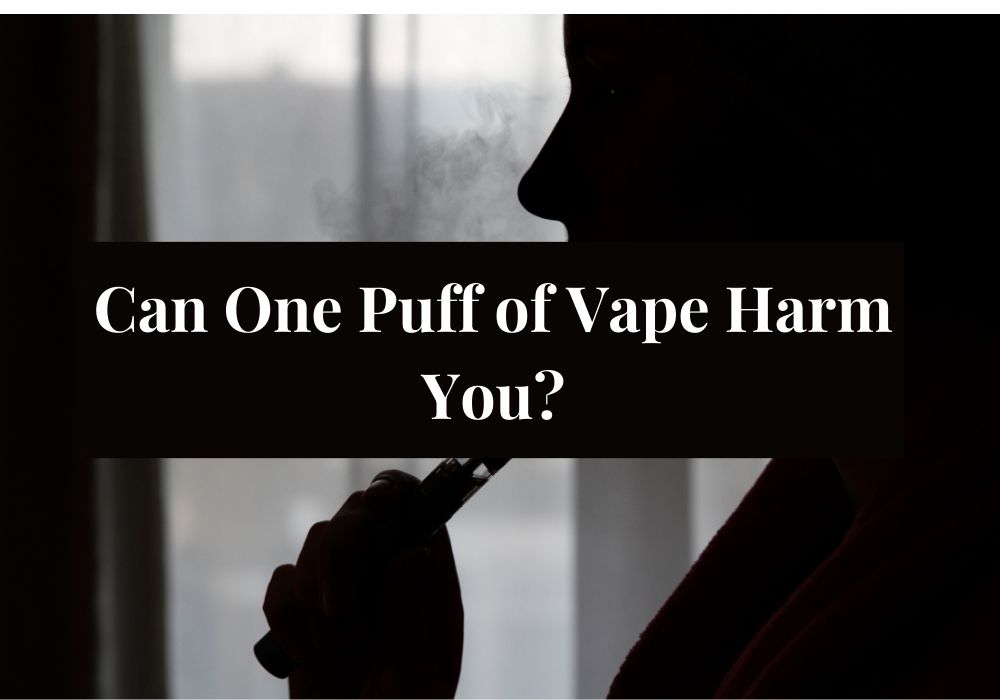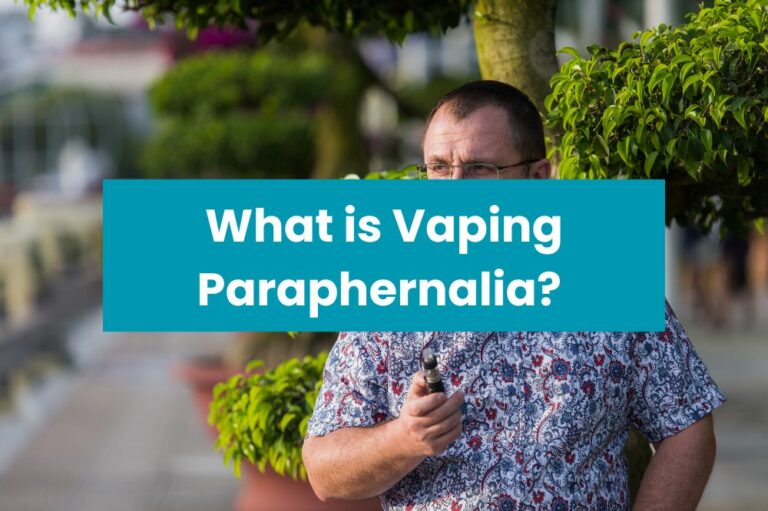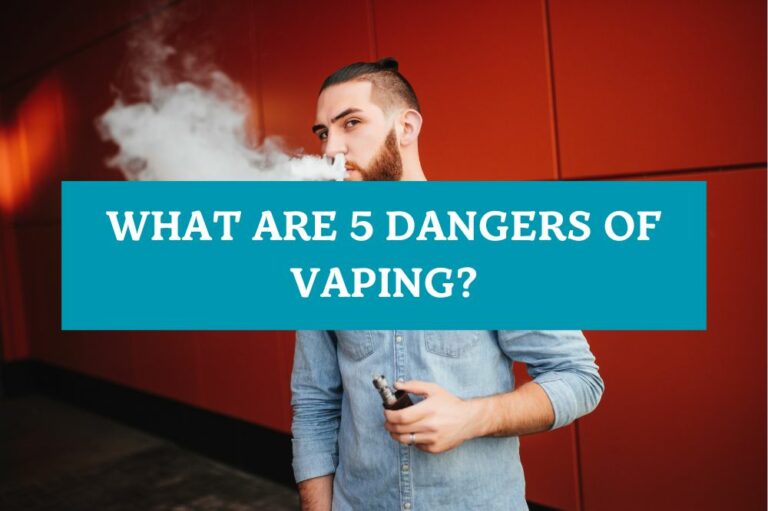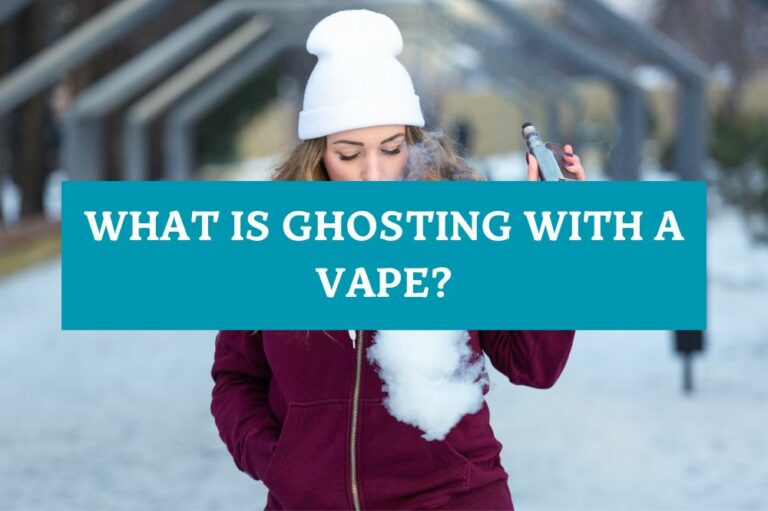Can One Puff of Vape Harm You?

If you’re considering trying vaping or have already tried it, you may be wondering if just one puff of a vape can harm you. The answer is yes, even a single puff can cause harm to your body. Vaping has been marketed as a safer alternative to smoking cigarettes, but recent studies have shown that it can still cause damage to your lungs and blood vessels.
Cardiac Surgeon Lucian Durham warns that inhaling a single puff from a vape could make you his next patient at Froedtert and Medical College of Wisconsin. The lung damage he has seen in patients who have vaped is similar to that of people who have been exposed to toxic chemical fumes. Even without nicotine, vaping can harm your lungs and blood vessels, and the damage can occur after just one use of an e-cigarette.
A report published in the journal Radiology has found that non-nicotine vaping can harm your lungs even after just one use of an e-cigarette. The study found that vaping without nicotine poses dangers, and the chemicals in e-cigarettes can cause inflammation and damage to the lungs. In addition, the study found that vaping can also cause changes in blood flow and blood vessel function, which can increase the risk of heart disease.
Understanding Vaping
If you are new to vaping, it is important to understand what it is and how it works. Vaping involves inhaling an aerosol, commonly referred to as vapor, that is produced by an electronic cigarette or other vaping device. The aerosol is created by heating a liquid, known as e-juice or vape juice, that typically contains nicotine, flavorings, and other chemicals.
While vaping is often marketed as a safer alternative to smoking, it is not without risks. The aerosol produced by vaping contains a number of potentially harmful chemicals, including formaldehyde, acetaldehyde, and acrolein. In addition, some vape juices have been found to contain heavy metals like lead and cadmium.
It is also important to note that vaping can be addictive due to the presence of nicotine in many vape juices. Nicotine is a highly addictive substance that can have a number of negative health effects, including an increased risk of heart disease and stroke.
SPIRITBAR Katana BP10000
- Slender, leather-textured body reminiscent of a katana handle for an authentic samurai feel
- Unique samurai-inspired e-liquid flavor - fruity yet not too sweet, with a luxurious, elegant aroma
- Powerful 650mAh rechargeable battery for extended vaping time
- Large 18ml e-liquid capacity and 10,000 puff capacity
- Advanced mesh coil and e-liquid & power display screens for optimal vaping experience
The special juice captures the essence of the samurai spirit with its rich, smoothly pulsating flavor that brings new satisfaction with every puff. The device's slender, leather-textured design evokes the grip of a samurai's katana, making this product a perfect choice for beginner vapors.
If you are considering vaping, it is important to do your research and make an informed decision. Talk to your healthcare provider about the potential risks and benefits, and consider the following tips:
- Choose a reputable brand of vaping device and vape juice.
- Avoid using vaping devices that have been modified or tampered with.
- Limit your use of vaping devices to reduce your risk of addiction and potential health effects.
- Consider using nicotine-free vape juice if you are trying to quit smoking or avoid nicotine addiction.
By understanding the risks and taking steps to reduce your exposure to harmful chemicals, you can make an informed decision about whether or not vaping is right for you.
Components of Vape Smoke
When you take a puff of a vape, you inhale an aerosol that is created by heating a liquid in the device. The liquid is usually made up of several components, including:
- Propylene glycol (PG): This is a colorless, odorless liquid that is used as a solvent in many products, including food, medicine, and cosmetics. PG is used in vape liquids to create the vapor that you inhale.
- Vegetable glycerin (VG): This is a clear, odorless liquid that is derived from vegetable oil. It is used in vape liquids to create thicker clouds of vapor.
- Nicotine: This is a highly addictive substance that is found in tobacco. It is also added to many vape liquids to give users a similar sensation to smoking.
- Flavorings: Vape liquids can contain a wide range of flavorings, including fruit, candy, and dessert flavors.
- Other chemicals: Some vape liquids may contain other chemicals, such as formaldehyde, acetaldehyde, and acrolein, which are produced when the liquid is heated.
It is important to note that the long-term effects of inhaling these chemicals are not yet fully understood. However, studies have shown that even a single puff of a vape can have immediate effects on your body. For example, a study published in the journal Radiology found that inhaling just one puff of a vape can cause a decrease in blood flow to the heart. Another study published in the American Journal of Respiratory and Critical Care Medicine found that inhaling vape smoke can cause inflammation in the lungs, which can lead to respiratory problems over time.
In summary, the components of vape smoke can vary depending on the liquid used, but typically include propylene glycol, vegetable glycerin, nicotine, flavorings, and other chemicals. While the long-term effects of inhaling these chemicals are not yet fully understood, studies have shown that even a single puff of a vape can have immediate effects on your body.
Immediate Effects of a Single Puff
If you’re thinking about taking just one puff of a vape, you might want to reconsider. According to recent studies, even a single puff of a vape can have immediate effects on your body.
SPIRITBAR Jack’s Flask 9000 Puffs
- Stylish pirate flask-shaped body providing an exciting vaping experience
- Delivering up to 9000 puffs per device
- 20ml e-liquid capacity with 50mg nicotine strength for satisfying throat hit
- Specialized pirate-themed e-juice flavors for rich, swirling taste
- Premium mesh coil optimizes flavor profile for maximum vaping enjoyment
This disposable vape captures the daring spirit of the high seas with its flask styling and signature pirate e-juice flavors. The extraordinary battery life provides 9000 indulgent puffs for extended vaping pleasure. Live boldly and freely with the Jack's Flask - a legendary vaping experience fit for a pirate's adventures.
Research conducted at the University of Pennsylvania found that after just one puff, your body’s blood vessels and circulation can change, even when there is no nicotine present. This means that even if you’re vaping a nicotine-free e-liquid, you could still experience negative effects.
Cardiac surgeon Lucian Durham warns that inhaling a single puff from a vape could make you his next patient, as he has seen lung damage in patients from just one puff. The damage that can occur from a single puff can lead to hardening of the lungs and even irreversible damage.
One vaping session can result in changes in blood flow, and researchers worry that vaping can lead to severe lung damage. The risks associated with vaping are real, and adolescents often feel that bad things happen to everyone else. However, the dangers of vaping are not something to take lightly.
The liquids used in vaping contain chemicals that can harm the environment if not disposed of properly. E-cigarette waste can cause environmental damage, and the liquids used in vaping can be highly addictive, even if they don’t contain nicotine.
In conclusion, taking just one puff of a vape can have immediate effects on your body, and the risks associated with vaping are real. It’s important to be aware of the dangers of vaping and to make informed decisions about your health.
Long-Term Effects of Occasional Use
If you’re wondering whether vaping just once in a while is safe, the answer is not entirely clear. While some studies suggest that occasional use of e-cigarettes may be less harmful than smoking traditional cigarettes, the long-term effects of vaping remain unknown.
One concern is that e-cigarettes may lead to permanent vascular disease, like atherosclerosis, which is typically associated with regular tobacco use. A study on mice found that just five minutes of vaping can damage blood vessels, causing stiffness and narrowing. Researchers also noticed a loss of endothelial cell function in the blood vessels of people who vaped, with harmful effects similar to smoking tobacco cigarettes.
Another concern is that even occasional use of e-cigarettes may cause lung damage. Cardiac surgeon Lucian Durham warns that inhaling a single puff from a vape could make you his next patient at Froedtert and Medical College of Wisconsin. The lung damage he has seen in patients is similar to that caused by exposure to toxic chemicals.
Overall, the research on whether e-cigarettes can help people quit smoking is still inconclusive, according to the CDC. While vaping may be less harmful than smoking traditional cigarettes, it is not a risk-free alternative. If you are concerned about the potential health effects of vaping, it’s best to avoid it altogether.
Comparing Vaping to Traditional Smoking
When it comes to smoking versus vaping, both have their own set of risks and benefits. Here are some key differences to keep in mind:
- Chemicals: Traditional cigarettes contain over 7,000 chemicals, many of which are toxic and can cause cancer. Vaping, on the other hand, typically involves heating up a liquid that contains nicotine, flavorings, and other chemicals. While e-cigarettes may contain fewer harmful chemicals than traditional cigarettes, they are not completely safe.
- Nicotine: Both traditional cigarettes and e-cigarettes contain nicotine, which is highly addictive. However, the amount of nicotine in e-cigarettes can vary widely, and some e-liquids may contain more nicotine than a traditional cigarette.
- Health Risks: Traditional cigarettes are known to cause a range of health problems, including lung cancer, heart disease, and respiratory issues. While the long-term health effects of vaping are not yet fully understood, there is evidence to suggest that vaping can also cause lung damage and other health problems.
- Secondhand Smoke/Vapor: Secondhand smoke from traditional cigarettes is known to be harmful to those who are exposed to it. Similarly, secondhand vapor from e-cigarettes can also be harmful, as it may contain chemicals that can irritate the lungs and cause other health problems.
Overall, while vaping may be less harmful than traditional smoking, it is not completely safe. If you are considering vaping, it is important to understand the risks involved and to make an informed decision about your health.
The Role of Nicotine
Nicotine is a highly addictive substance found in many e-cigarettes and vaping products. It is what keeps people coming back for more, and what can make quitting vaping so difficult.
SPIRITBAR Katana BP10000
- Slender, leather-textured body reminiscent of a katana handle for an authentic samurai feel
- Unique samurai-inspired e-liquid flavor - fruity yet not too sweet, with a luxurious, elegant aroma
- Powerful 650mAh rechargeable battery for extended vaping time
- Large 18ml e-liquid capacity and 10,000 puff capacity
- Advanced mesh coil and e-liquid & power display screens for optimal vaping experience
The special juice captures the essence of the samurai spirit with its rich, smoothly pulsating flavor that brings new satisfaction with every puff. The device's slender, leather-textured design evokes the grip of a samurai's katana, making this product a perfect choice for beginner vapors.
While nicotine itself is not considered a carcinogen, it can still have harmful effects on your body. According to Johns Hopkins Medicine, nicotine can cause your blood vessels to constrict, which can lead to high blood pressure and an increased risk of heart attack or stroke.
In addition, nicotine can also have negative effects on your brain, including changes in mood and behavior. It can increase anxiety, cause irritability, and even lead to depression in some cases.
It’s important to note that the amount of nicotine in one puff of a vape can vary depending on the device and the type of e-liquid being used. Some devices may deliver more nicotine than others, and some e-liquids may have higher nicotine concentrations.
Overall, while one puff of a vape may not cause immediate harm, it’s important to understand the potential risks associated with nicotine use and to make informed decisions about your vaping habits.
Potential Allergens in Vape Smoke
If you’re considering vaping, it’s important to understand that the vapor contains potential allergens that could harm your health. While e-cigarettes are marketed as a safer alternative to traditional cigarettes, they still contain chemicals that can irritate your lungs and cause allergic reactions.
One of the most common allergens in vape smoke is propylene glycol (PG). PG is used as a base for e-liquid and is responsible for producing the vapor. It’s also used in a variety of other products, including cosmetics, food, and pharmaceuticals. However, some people are allergic to PG and can experience symptoms such as throat irritation, dry cough, and shortness of breath.
Another potential allergen in vape smoke is vegetable glycerin (VG). VG is also used as a base for e-liquid and is responsible for producing the vapor. While it’s generally considered safe, some people may experience allergic reactions to VG, such as skin irritation, hives, and difficulty breathing.
In addition to PG and VG, e-liquids may contain other potential allergens, such as flavorings and nicotine. Some people may be allergic to specific flavorings, such as cinnamon or vanilla, while others may be allergic to nicotine. Nicotine can cause a variety of symptoms, including nausea, dizziness, and headaches.
It’s important to note that allergic reactions to e-cigarettes are relatively rare. However, if you experience any symptoms after vaping, it’s important to stop immediately and seek medical attention if necessary. If you have a history of allergies or asthma, you may be more susceptible to allergic reactions from vaping.
Vaping and Lung Health
If you are considering vaping, it is essential to understand the potential risks to your lung health. Even a single puff from a vape can harm your lungs, according to a report published in the journal Radiology.
When you inhale from a vape, you are inhaling an aerosol that contains chemicals, flavorings, and other additives. These chemicals can irritate and damage your lung tissue, leading to inflammation, coughing, and wheezing. Prolonged exposure to these chemicals can also cause long-term damage to your lung health.
Furthermore, vaping can be especially harmful to young people and those with preexisting lung conditions. According to Johns Hopkins Medicine, vaping can cause irreversible lung damage in young people, including reduced lung function and increased risk of respiratory infections.
If you have a preexisting lung condition, such as asthma or chronic obstructive pulmonary disease (COPD), vaping can exacerbate your symptoms and worsen your condition. The chemicals in e-liquids can cause inflammation and irritation in your airways, making it harder to breathe.
In conclusion, even a single puff from a vape can harm your lung health. If you are considering vaping, it is essential to understand the potential risks and make an informed decision about your health. If you are currently vaping and experiencing symptoms such as coughing, wheezing, or shortness of breath, it is crucial to seek medical attention as soon as possible.
Vaping and Heart Health
If you are considering taking a puff from a vape, you should be aware of its impact on your heart health. Vaping can cause a bump in heart rate and blood pressure due to the nicotine jolt, which can make your heart beat faster and boost your blood pressure. This increase in heart rate and blood pressure can put stress on your heart, which is not good for your overall health.
According to a study in animals, vaping can impair blood vessels and the heart’s ability to maintain blood pressure. This can lead to heart disease and other cardiovascular problems. Some of the things that are known to be adverse to the heart can still be measured in people who vape. Therefore, it is essential to be aware of the risks associated with vaping and heart health.
The American Heart Association warns that the liquid used in e-cigarettes usually contains harmful substances such as nicotine, heavy metals, and known carcinogens such as formaldehyde that can have negative effects on lung health, cardiovascular health, and overall well-being. Therefore, even a single puff from a vape can harm your heart and overall health.
In conclusion, vaping can have a significant impact on your heart health, and even a single puff can harm your heart. Therefore, it is crucial to be aware of the risks associated with vaping and consider alternative methods to quit smoking or avoid nicotine altogether.
Psychological Effects of Vaping
When it comes to the potential harm of vaping, most people think about the physical effects on the body. However, vaping can also have significant psychological effects on the user. Here are some of the ways that vaping can impact your mental health:
Dependence
Vaping can be highly addictive, especially if the liquid contains nicotine. Nicotine is a psychoactive substance that can lead to dependence, making it difficult to quit. Dependence on nicotine can also lead to impulsive behavior, mood disorders, anxiety, and depression.
Memory and Cognitive Function
Research has shown that vaping can have negative effects on memory and cognitive function. The chemicals in e-cigarettes can damage the parts of the brain responsible for memory, emotion, and critical thinking. This can lead to difficulty with learning, problem-solving, and decision-making.
Mood Disorders
Vaping has been linked to an increased risk of mood disorders, such as depression and anxiety. A 2019 study found that frequent vaping was associated with a higher risk of depression compared to non-users. Former e-cigarette users also had a higher risk of reporting symptoms of depression and anxiety.
Substance Abuse
While vaping is often marketed as a safer alternative to smoking, it can still lead to substance abuse. Some users may turn to vaping as a way to cope with stress or anxiety, leading to a reliance on the substance. Additionally, vaping can be a gateway to other forms of substance abuse, such as smoking or using drugs.
Overall, vaping can have a significant impact on your mental health. If you are struggling with dependence on vaping or experiencing negative psychological effects, it is important to seek help from a healthcare professional.








